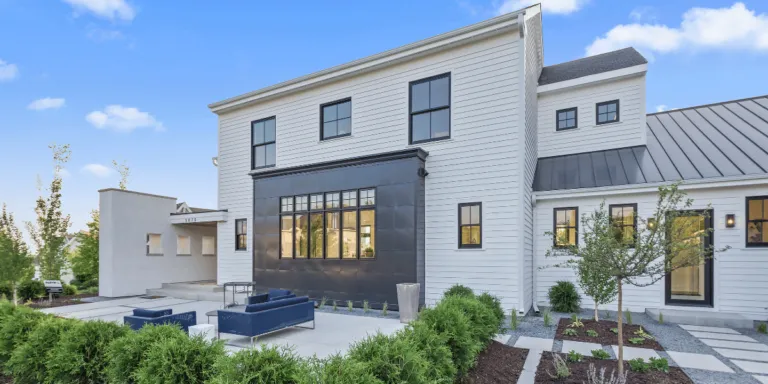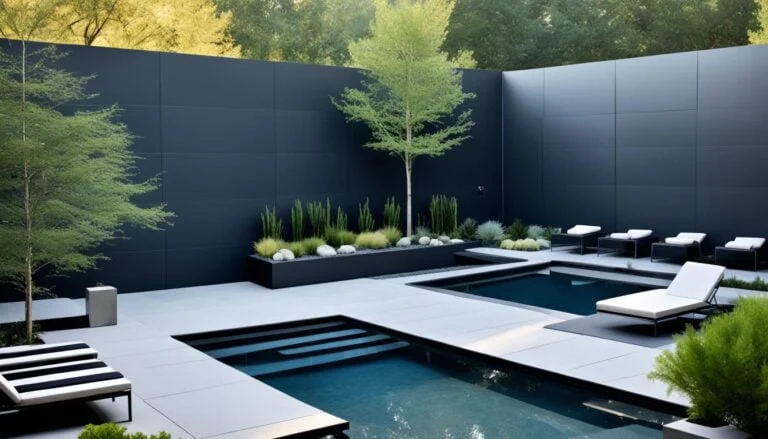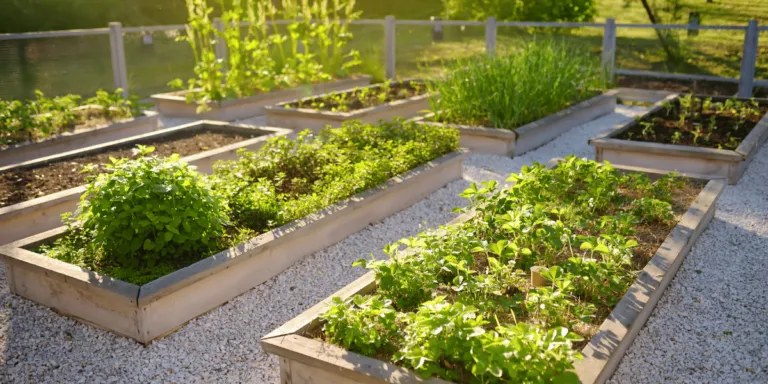The current digital transformation offers substantial opportunities for the development of connected garden devices. These devices are part of the Internet of Things (IoT), which allows for the interconnectivity and communication between physical devices in order to simplify plant care and promote eco-friendly gardening practices. With the rise of sustainable urban gardening and eco-friendly landscape design, connected garden devices play a crucial role in optimizing plant growth, conserving water, and reducing energy consumption. These devices enable innovative automation and remote monitoring, ensuring that plants receive the optimal conditions for their growth and health.
Key Takeaways:
- Connected garden devices are part of the Internet of Things (IoT) and enable plant care automation.
- These devices promote sustainable urban gardening and eco-friendly landscape design.
- Connected garden devices optimize plant growth, conserve water, and reduce energy consumption.
- Automation and remote monitoring ensure plants receive optimal conditions for growth and health.
- Connected garden devices contribute to the development of a greener and more sustainable future.
Eco-Friendly Water Conservation Techniques
Connected garden devices have revolutionized water conservation in eco-gardens through innovative techniques. By incorporating smart irrigation systems that utilize sensors to monitor soil moisture levels, water waste can be significantly reduced. These systems deliver water only when necessary, ensuring that plants receive just the right amount of water for their growth and health. As a result, gardeners can minimize water usage without compromising the well-being of their plants.
In addition to smart irrigation systems, renewable energy sources such as solar power can be integrated into eco-gardens to power connected garden devices. By harnessing the sun’s energy, these devices can operate efficiently and sustainably, further reducing the environmental impact of gardening practices. Renewable energy not only supports eco-friendly water conservation but also promotes a greener and more sustainable approach to garden management.
Implementing these eco-friendly water conservation techniques with connected garden devices allows gardeners to cultivate thriving and healthy plants while minimizing their ecological footprint. By embracing these innovative practices, eco-gardens become sustainable havens that promote a balance between human needs and the natural environment.
High-Tech Plant Care and Monitoring

Connected garden devices offer innovative and high-tech solutions for plant care and monitoring, revolutionizing the way we approach gardening. One such breakthrough is the development of indoor hydroponic systems, which utilize cutting-edge IoT technology to create an optimal environment for plants to grow without the need for soil.
Indoor hydroponic systems are designed to provide plants with precise amounts of water, nutrients, and light by employing sensors that monitor crucial factors such as pH levels, nutrient levels, and lighting conditions. These systems allow for remote monitoring and adjustment, ensuring that plants receive the necessary resources for healthy growth and flourishing.
With the help of connected garden devices, gardeners can remotely access and control the settings of their indoor hydroponic systems, making it convenient to monitor and adjust crucial parameters from anywhere at any time. This high-tech approach to plant care resolves the challenges posed by limited spaces, making gardening more accessible to individuals living in apartments or urban environments.
In addition to indoor hydroponic systems, connected garden devices also provide advanced tools for plant monitoring. These devices can track and analyze environmental data such as temperature, humidity, and CO2 levels, enabling gardeners to make data-driven decisions and ensure optimal plant health.
The Benefits of High-Tech Plant Care and Monitoring
- Precise Control: Connected garden devices allow for precise control over crucial parameters such as water, nutrients, and light, ensuring that plants receive optimal care.
- Efficiency: By automating plant care processes and utilizing data-driven insights, high-tech gardening reduces effort and increases efficiency.
- Accessibility: Indoor hydroponic systems and connected monitoring devices make gardening accessible to individuals with limited outdoor space.
- Optimal Plant Health: With real-time monitoring and adjustments, gardeners can maintain optimal growing conditions, leading to healthier and more productive plants.
By embracing high-tech plant care and monitoring through connected garden devices, gardeners can unlock a whole new level of precision and efficiency in their gardening practices, ensuring the success and well-being of their indoor plants, even in limited spaces.
Enhancing Biodiversity with Smart Garden Automation

Smart garden automation, driven by connected garden devices, presents exciting possibilities for enhancing biodiversity. By creating wildlife habitat gardens, gardeners can utilize these devices to provide essential resources such as food, shelter, and water for various wildlife species. For instance, smart bird feeders attract a diverse range of birds, while insect houses offer a safe haven for beneficial insects like bees and ladybugs. Incorporating water features into the garden helps support amphibians and aquatic wildlife.
Another effective method of enhancing biodiversity is through the implementation of green roof ecosystems. Connected devices on green roofs help monitor and maintain rooftop gardens, which offer important habitats for plants and animals. These green roofs also contribute to improving urban air quality and mitigating the heat island effect.
| Benefits of Wildlife Habitat Gardens | Benefits of Green Roof Ecosystems |
|---|---|
|
|
By leveraging the power of connected garden devices, gardeners can actively contribute to the preservation and promotion of biodiversity. These smart garden automation systems empower individuals to create sustainable and wildlife-friendly environments, making a positive impact at a local level.
Expanding Possibilities with Vertical and Urban Permaculture
Connected garden devices have paved the way for innovative practices such as space-efficient vertical gardening and urban permaculture. These techniques offer exciting opportunities for individuals living in small apartments, balconies, or urban environments to engage in sustainable gardening practices.
Vertical gardening is a space-efficient approach that utilizes vertical space to grow plants without occupying much horizontal area. With the help of connected devices, such as vertical gardening systems with built-in irrigation and lighting systems, plant enthusiasts can optimize plant growth even in limited spaces. These devices ensure that plants receive the necessary water and light, leading to healthier and more abundant yields.
Benefits of Space-Efficient Vertical Gardening:
- Maximizes limited gardening space
- Improves accessibility for urban gardeners
- Enhances urban aesthetics and greenery
- Promotes sustainability and self-sufficiency
In addition to vertical gardening, connected garden devices also contribute to the development of urban permaculture practices. Urban permaculture integrates sustainable gardening methods into urban landscapes, emphasizing resource conservation, biodiversity, and community engagement.
Enhancing Urban Permaculture with Connected Garden Devices:
- Composting Automation: Connected devices can monitor and automate the composting process, ensuring efficient nutrient recycling and reducing waste.
- Rainwater Harvesting Systems: Connected garden devices enable the collection and distribution of rainwater for irrigation purposes, reducing reliance on traditional water sources.
- Efficient Nutrient Management: With the help of connected devices, urban permaculture practitioners can accurately monitor and adjust nutrient levels in the soil, creating optimal conditions for plant growth.
By embracing space-efficient vertical gardening and urban permaculture practices enhanced by connected garden devices, individuals can cultivate thriving gardens in even the most constrained spaces. These practices contribute to the creation of sustainable and vibrant urban environments that promote community involvement and ecological conservation.
Conclusion
In conclusion, incorporating connected garden devices into eco-friendly gardening practices has revolutionized plant care and maintenance. These devices have paved the way for sustainable urban gardening and eco-friendly landscape design, promoting water conservation, energy efficiency, and biodiversity in garden spaces. By integrating high-tech solutions like indoor hydroponic systems and smart garden automation, gardeners can achieve optimal plant growth and health.
Moreover, connected devices have expanded the possibilities for vertical and urban permaculture, making gardening accessible even in small spaces and urban environments. By embracing contemporary garden artistry and biophilic design principles, gardeners can create eco-friendly garden spaces that enhance their overall well-being and foster a deeper connection with nature.
With the help of connected garden devices, achieving an eco-friendly garden renovation becomes more achievable, contributing to a greener and more sustainable future. By leveraging technology and automation, gardeners can create thriving and beautiful gardens that not only enhance the aesthetic appeal but also promote environmental consciousness and ecological balance.
Frequently Asked Questions
What are connected garden devices?
Connected garden devices are physical devices that are part of the Internet of Things (IoT) and are designed to simplify plant care and promote eco-friendly gardening practices. These devices are interconnected and communicate with each other to optimize plant growth, conserve water, and reduce energy consumption.
How do connected garden devices revolutionize water conservation in eco-gardens?
Connected garden devices revolutionize water conservation in eco-gardens through innovative techniques. Smart irrigation systems, for example, use sensors to monitor soil moisture levels and deliver water only when necessary, reducing water waste. Additionally, these devices can integrate renewable energy sources like solar power to further reduce environmental impact.
What high-tech solutions do connected garden devices offer for plant care and monitoring?
Connected garden devices offer high-tech solutions for plant care and monitoring. Indoor hydroponic systems utilize IoT technology and sensors to monitor and control factors like pH levels, nutrient levels, and lighting conditions, ensuring plants receive the optimal environment for healthy growth. Gardeners can remotely monitor and adjust these parameters for efficient plant care.
How can connected garden devices enhance biodiversity in gardens?
Connected garden devices enable gardeners to create wildlife habitat gardens by providing food, shelter, and water sources for various wildlife species. Smart bird feeders, insect houses, and water features attract and support a diverse range of wildlife. Green roof ecosystems, monitored by connected devices, also provide habitat for plants and animals while improving urban air quality.
How do connected garden devices expand possibilities for vertical and urban permaculture?
Connected garden devices make space-efficient vertical gardening and urban permaculture practices more accessible. Vertical gardening systems with built-in irrigation and lighting systems optimize plant growth in limited spaces. Connected devices can also monitor and automate tasks such as composting, rainwater harvesting, and nutrient recycling, allowing for a more efficient and sustainable urban gardening experience.










